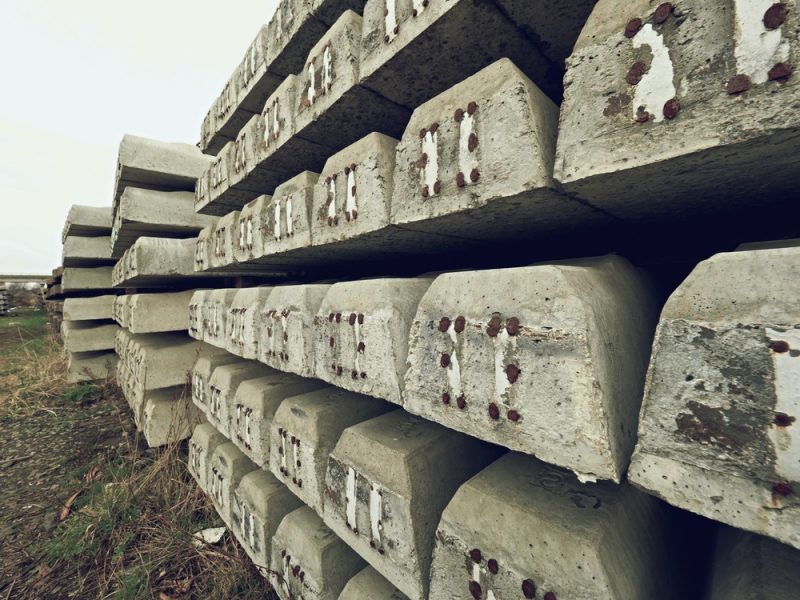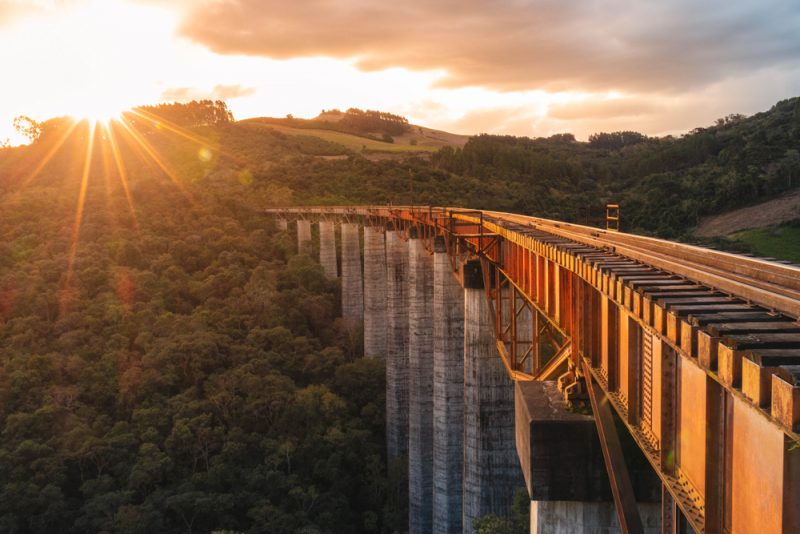Traveling via train has become safer and more convenient as engineers and railroad employees continue to improve track infrastructure components. This is what the researchers from RailTEC or the Rail Transportation and Engineering Center, a research group under the University of IL at Urbana-Campaign are doing. They find ways to improve track designs. To date, thanks to their efforts, rail tracks have become safer and train experiences have been better for most train riders.
In general, concrete remains to be the most popular option for a crosstie material. It is commonly used in areas where there is HAL, steep grade railroads, railroads with a sharp curve, and gross tonnage on a regular basis. This is true especially in North America.
For railroads where infrastructure reliability and efficacy are of utmost importance, you can also see concrete crossties. This material is also great with less maintenance needed.
In North America, millions of concrete crossties are used in different rail infrastructures. The country is also able to produce millions of crossties concrete annually (around 35 million). With most railroads needing maintenance and repair after fifty years, it is significant to know that manufacturing companies can provide the needed concrete crossties in the future.
The Issue
Despite its known importance in the construction field, it seems that the use of concrete crossties and its design is hugely misunderstood by most. Crossties are designed based on different factors used in loads with static axle. Without considering this factor, the use of concrete crossties can lead to early service problems or overly designed concrete crossties – leading to overspending and waste of funding.
There are two types of crosstie failures that often happen in railroads – bending and flexure. These failures happen when the crosstie is under load.
For flexure, we have cracking of the center flexural – and when it happens, you have to stop using your railroad. In North American rails, this is a common issue. Another issue is rai seat cracking. One way to avoid the flexure problem is to understand the crosstie flexure design. To lengthen the life of your crossties, you should understand the condition or environment where you are installing those crossties. What does it mean for you?
Currently, there are methods that can be used to quantify concrete crossties such as where it bends. Is there enough support condition for you to install your set-up between crossties?
Different HAL freight railways, the MTA – NY Transit Authority, Metrolink (St. Louis, MO), Amtrak’s Northeast Corridor, and Metra (Chicago IL) are now using an instrument that can quantify concrete crossties. Thanks to private funding and with the assistance of FRA and FTA, having such instrumentation has become possible in most railroads.
How Does It Work?
To gather data, this instrument was installed in eight fields across the US. It aims to understand the effect of loaded and unloaded axle to crosstie concrete, center bound and well-supported ballast, and the effect of temperature on crossties among other factors that can affect a bend crosstie demand.
The result of this study revealed that for crossties with flexural designs, temperature can affect the crosstie significantly especially it’s mid part. It was also noted that the support of the crossties affects its life especially in bending crossties like for freight railroads using HAL.
The recommendation was to develop an application that can provide support for concrete crossties with flexural and bending designs. It is called a method of probability or probabilistic and it focuses on distributing the weight put on crossties upon installation. Engineers should not assume of fixed numbers and outcome (deterministic approach) when it comes to installing crossties and what will pass through it. This probabilistic idea was already proposed in the early 2000s. It was from John Samuels, saying that it will reduce the railroad stress if done properly.
The advantage of probabilistic design is the cost. It is more economical and practical for the railroad industry to use it. It means quantifying potential risks associated with having crossties. For example, based on probability, crosstie designs can now reduce up to 50% of negative impact at the center which is helpful if the railroad is used for freights using HAL. It also means reducing rail seat section for up to 40% as needed by the applications that will use the crossties.
With this method, the structure gets more reliable and balanced. It also becomes safer to use while improving durability. In the proposed method, there will be lesser prestressing wires (which means less cost during installation) while at the same time modifying the gravity center of the prestressing steel. With lesser funds for crossties installation, the fund can be reallocated to other track components (eg for tie pads under) or allocate it for regular maintenance.
This proposal is a hypothesis but with real possibility. RailTEC is known for designing and developing concrete crossties designs that work well for Armtrak. They are also known in developing designs for applications for heavy and light rail transit.
Crossties are now being used and installed for field use and for testing. The use of probabilistic method is useful in improving the mechanical and empirical design of crossties in the future. It can also be used in finding other usage for concrete crossties aside from being used in the railway industry.
Who’s Behind This Initiative?
The FRA and the FTA have been helpful in making this initiative a reality by providing financial support for this research. These offices are under DOT and they are giving support to this knowing its importance. There are also concrete contractors partnering for the projects. Companies like CCA Concrete Contractor Austin in Texas are constructing the commercial concrete for the project. When in need of a concrete company Austin TX, they rose to the challenge.
Other support were given by the following groups and companies:
- BNSF Railway
- Union Pacific Railroad
- Pandrol
- Amtrak
- Progress Rail Service


